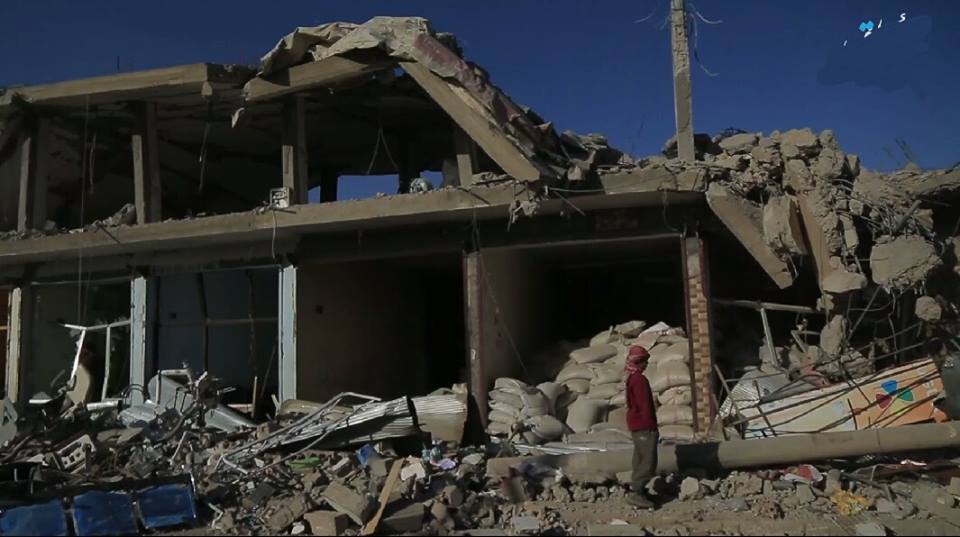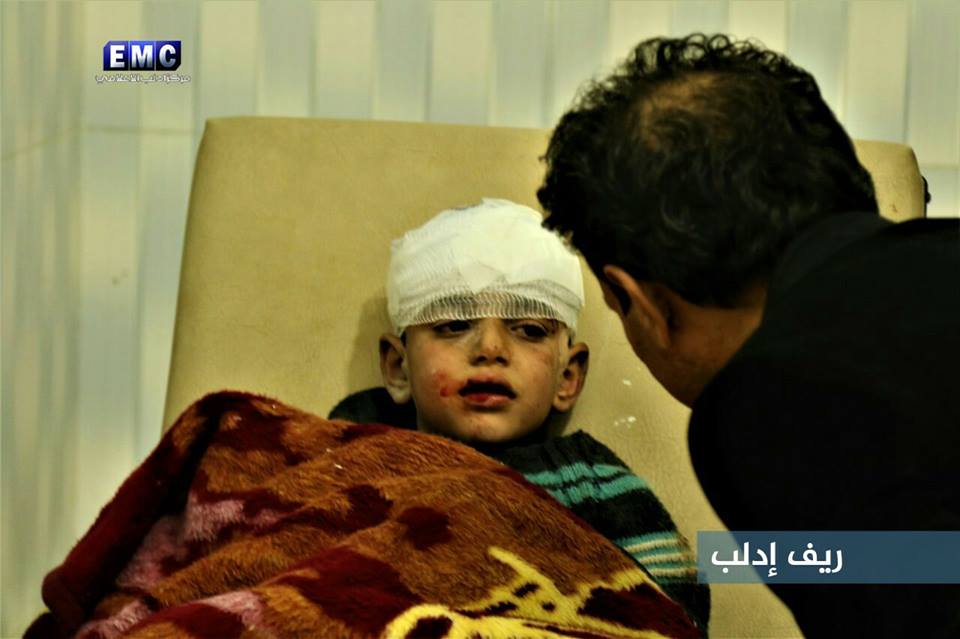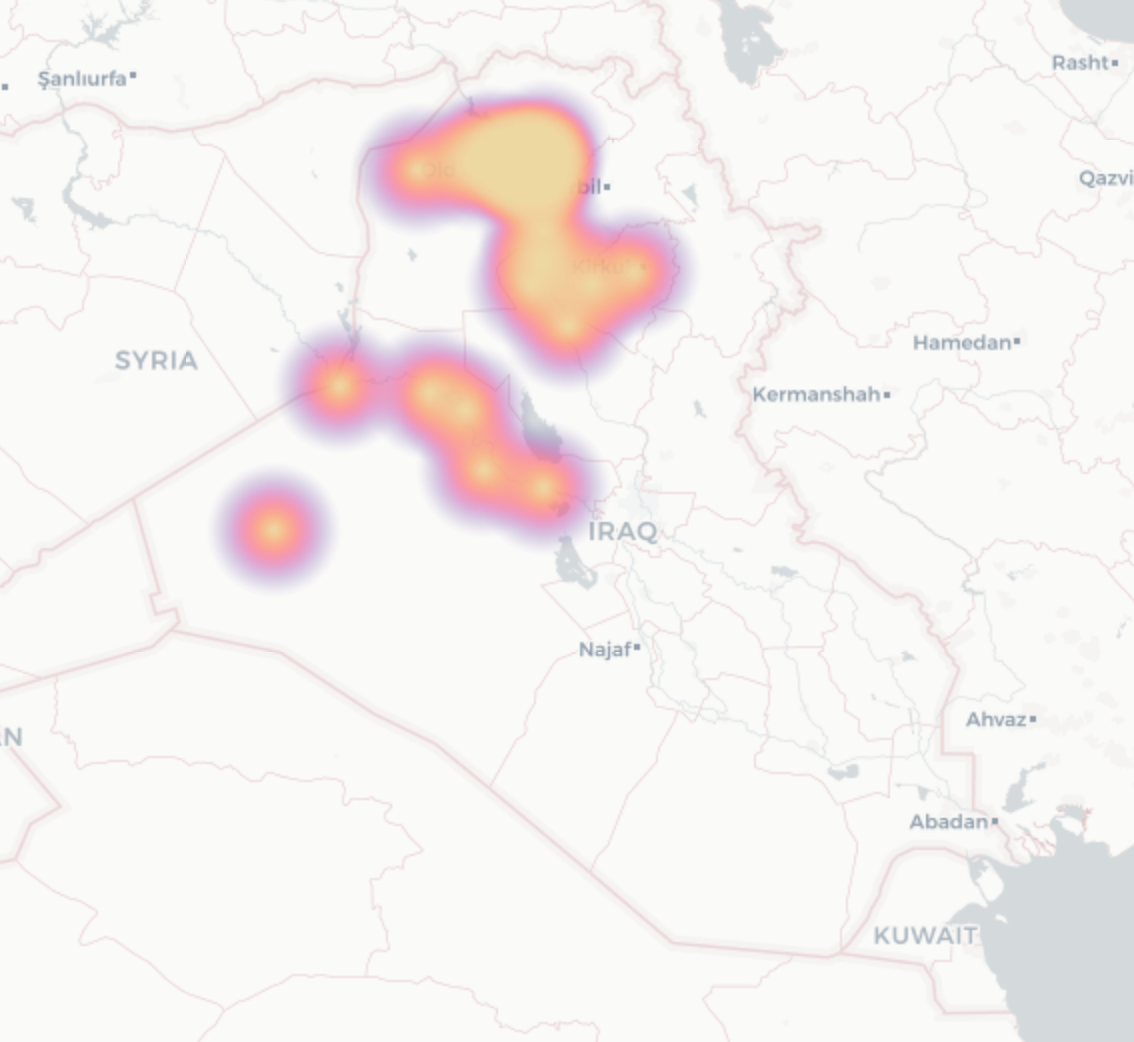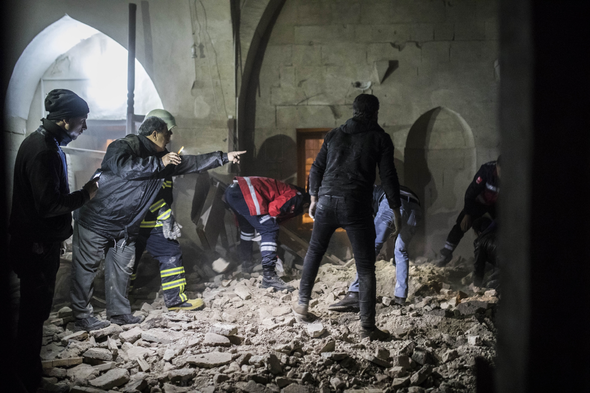Since the capture of Raqqa on October 20th marked the end of large-scale Coalition-backed urban fighting, the war against ISIS has entered a new stage. Both the Syrian and Iraqi governments have declared victory against ISIS as a territorial entity, though the Coalition remains active in both countries. Even as Airwars tracks a dramatic fall in civilian casualty events attributed to the alliance, its mission to monitor all casualty allegations from international actions remains unchanged.
To reflect the slowdown in Coalition strikes, we have changed the format of our monthly assessments. These will continue to focus on allegations of civilian harm from strikes in both Iraq and Syria, but will also look at the wider nature of our ongoing work. As before, this will include allegations against Russia in Syria, as well as a detailed look at our new project assessing casualties from Turkey’s offensive in Afrin. In addition, key members of the Airwars team will report on work tracking civilian casualties in Libya; our advocacy engagement with militaries on behalf of civilians; and developments from our in-house investigations unit.
Conflict monitoring
Coalition actions
From August 8th 2014 to January 31st 2018 an overall total of between 17,166 and 25,483 civilian non-combatant fatalities had been locally alleged from 2,458 separate reported Coalition incidents, in both Iraq and Syria. Of these, Airwars presently estimates that a minimum of 6,136 to 9,315 civilians are likely to have died in Coalition actions. The Coalition itself has so far conceded at least 841 deaths from 211 events.
The known remaining active Coalition allies – the United States, the UK, France and the Netherlands – released 448 munitions from the air across Iraq and Syria during January 2018 according to official AFCENT data – a 23% fall from December 2017, and the lowest number reported in any one month since the start of the war in August 2014. That in turn has led to a steep decline in reported civilian harm – particularly in Iraq. However casualties continue to be reported from eastern Deir Ezzor in Syria.
Iraq
The Coalition declared just 12 air and artillery strikes in Iraq during January, a 60% decrease from the last month of 2017 – and the lowest total for any month since August 2014 when Coalition actions began. However this may not reflect the true level of strikes, since a number of actions publicly declared by the Dutch and French militaries appear not to have been tallied by the Coalition.
Of the US’s two most active Coalition allies, the UK declared only one strike in Iraq during January, while France reported no airstrikes at all. The French did report 20 artillery strikes in support of Iraqi Security Forces – double the tally for December 2017.
The collapse in airstrikes in Iraq coincides with plummeting casualty numbers. Airwars has not tracked a likely civilian harm event in the country attributed to the Coalition since November 1st 2017, the longest such period since our tracking began.
There are still risks tied to low-intensity operations however. On January 27th, during a week in which the Coalition carried out just four strikes in Iraq, one went badly wrong. At least seven Iraqi police officers and Popular Forces personnel were reportedly killed and between 11 and 20 wounded when Coalition aircraft were reported to have hit an Iraqi forces convoy in error. The Coalition’s official spokesman later said on Twitter that the intervention had come at the “request/approval of Iraq” and that “CJOC [is] investigating, more info provided as available.”

Colonel Abdul Salam al-Obeidi, al-Baghdadi West police chief, was reported killed in the friendly fire event on January 27th (via Nineveh Tomorrow),
Syria
January saw likely deaths from Coalition actions in Syria continue to fall, as ISIS was pushed further back from what little territory it still held in Deir Ezzor governorate. Airwars tracked between 21 and 52 civilian deaths likely caused by Coalition actions during the month – a 36% decrease on December 2017.
However, developments elsewhere were ominous. On January 20th, a new front in the Syrian conflict opened when Turkey began a long-anticipated campaign in the northern Kurdish enclave of Afrin.
Meanwhile, reported Russian casualty events in Syria more than doubled compared to December 2017, as regime and allied forces mounted a fierce offensive against rebels in Idlib backed by heavy airstrikes. Once again, ordinary Syrians on the ground – often already displaced by fighting elsewhere – were facing extraordinary dangers.
Coalition actions and reported civilian casualties
The Coalition reported 277 air and artillery strikes in Syria during January – a 51% increase from December 2017’s 184 strikes. This was an indication that the war against ISIS, at least in Syria, was not over. All but one of these strikes were conducted in Deir Ezzor governorate near Abu Kamal, against remnant ISIS forces.
On January 3rd, Dutch F16s returned to the MIddle East, replacing neighbour, Belgium. The Netherlands military reported that weapons were fired during 11 missions during the month. These missions mostly occurred near Abu Kamal and Abu Hammam in Syria. The Dutch also said they had deployed weapons in Nineveh and Anbar in Iraq. Weekly reporting by the defence ministry, including general locational information of strikes, marked a modest increase in Dutch transparency over previous periods.
On January 16th, Australia formally ended its own campaign against ISIS – to date the only Coalition member besides the US to have conceded civilian harm from its actions in Iraq and Syria. Australia had conducted approximately 620 strikes in Iraq and 19 in Syria over the course of the war.
Meanwhile, both the UK and France remained active in Syria. France reported nine strikes – up from just one in December 2017. The UK reported 27 Syrian strikes – three times the number publicly declared in December.
Airwars researchers tracked 11 civilian casualty events tied to alleged Coalition strikes in Syria during January, all of them in Deir Ezzor governorate. Of these 11 events, Airwars currently evaluates eight as fairly reported. An event is assessed as fair when it has two or more uncontested and credible sources, in addition to confirmation that the Coalition carried out strikes on the day in the vicinity. Airwars’ current estimate is that between 21 and 52 civilians likely died in these eight events.
“Although the fight against ISIS has slowed down considerably, it is still fairly intensive in the last pockets of territory the terror group holds in Deir Ezzor governorate,” said Kinda Haddad, head of the Airwars Syria team. “We are no longer seeing daily allegations of civilian casualties, but when they do come they are often larger scale events. In some of the villages of Abu Kamal we have seen violent clashes between ISIS and the SDF. The claims are quite confusing, with incidents reported in the same village over several days, making it difficult to distinguish whether these are one event or several incidents two or three days in a row.”
On January 10th, between two and 20 civilians reportedly were killed in alleged Coalition airstrikes on Granij, according to a number of local sources. Euphrates Post and Step News Agency were among those blaming the Coalition, while Baladi reported a death toll of 20 with 30 more wounded in Coalition strikes. However, it said that the claim had originated with ISIS.
Three days later, on January 13th, five named civilians died in an alleged Coalition airstrike on Hajeen, according to local media. Step News Agency reported that the incident killed “a family of five including a woman”. The victims were named by Euphrates Post and Free Deir Ezzor as Matrouk al Saleh and his wife Bashar al Saleh, Yasser Shaker al Ismail and Abdul Qadir Shaker Al Ismail.

The ruins of a hospital in al Sha’afa, following an alleged Coalition airstrike on Jan 23rd (via Free Deir Ezzor)
There was one further significant event during the month, on January 23rd, when up to 15 civilians including as many as seven women died in an alleged Coalition airstrike at a hospital in Al Sha’afa, Deior Ezzor. The Syrian Observatory for Human Rights named victims as Nadia Al Abada Al Alu Mustafa and the wife of Ahmed Al Mahmoud Al Salem Al Mousa. This was the only civilian casualty event tracked in Al Sha’afa during January, though the Coalition had been extremely active in the area. It had claimed for example to have killed up to 150 ISIS fighters on January 20th in precision strikes near Al Sha’afa.
Russian military actions and civilian casualties
Overall, a total of 2,980 claimed civilian casualty events iallegedly involved Russian aircraft in Syria, between September 30th 2015 and January 31st 2018. The total claimed range for these alleged events is 11,251 to 15,740 non-combatants reported killed. At least 5,144 of the dead from these alleged events have so far been named by local media, social media and casualty recorders. According to aggregated data from the Syrian Network for Human Rights and the Syrian Observatory for Human Rights, at least 6,196 civilians are likely to have died in Russian actions to date.
While the risk from Coalition actions continued to decline in January, Syria’s civilians faced a significant leap in reported Russian strikes – often in tandem with Assad government ground and air assaults. Airwars researchers tracked 111 casualty events reportedly involving Russian aircraft in Syria during January – a major 118% increase from the 51 events tracked during December 2017.
Between 248 and 324 civilians were reported killed in those alleged Russian strikes. These figures remain unvetted by Airwars researchers, and are based only on initial monitoring. For this reason, they should not be compared directly with fully evaluated estimates tied to Coalition bombings and artillery strikes.
Of the 111 claimed Russian events, 78 (70%) were located by reports within Idlib governorate – over four times the number tracked in the same province a month prior. The strikes were in support of a major regime offensive against rebels who controlled the area. According to the UN’s humanitarian office, at least 212,140 civilians have been displaced in the last month of heavy fighting in Idlib.
“In the first month of 2018, we have seen a sharp and worrying increase in the Russian airstrikes in Syria. The majority of these airstrikes were in Idlib, north of Syria, which is very densely populated area full of displaced from all over Syria,” explains Abdulwahab Tahhan, who tracks alleged Russian casualty events for Airwars. “Hospitals and infrastructure were also targeted and some members of the White Helmets were reportedly wounded.”

A picture showing a child injured by alleged Russian raids on the town of Salamin in the eastern countryside of Idlib, Jan 19th (via EdilbEMC)
Between January 29th and 30th, Russia hosted a new round of peace talks in Sochi. In the week leading up to those talks, we tracked a marked decrease in civilian casualty events reportedly involving Russia. Airwars tracked nine new civilian casualty events for the week of January 22nd-28th, down from 31 incidents the week before.
However, casualty events began to climb again as soon as the Sochi talks concluded. “We have seen this pattern before over the peace talks at Astana and Geneva,” says Tahhan. “Strikes fall prior to the talks. Yet when they conclude, the campaign intensifies once again.”
Turkey in Syria: Afrin front puts civilians at risk
Syrians faced yet another front of the war when on January 20th, Turkey began air and artillery strikes in the Kurdish-controlled enclave of Afrin, a district of Aleppo governorate. Airwars responded with a new, rolling assessment of civilian casualties reported from the Turkish assault, as well as those allegedly caused by retaliatory attacks by Kurdish forces.
The long-expected offensive came in defiance of UN appeals, and led to fears of a wider conflict between Turkey and Kurdish forces in northern Syria. There are 125,000 internally displaced people which the UN says are currently sheltering in the Afrin district and nearby Kurdish-held areas. Thousands of additional civilians were displaced during the first week of fighting.
Through the end of January, Airwars had monitored 50 locally reported civilian casualty events reportedly carried out by Turkish-backed forces. Based on available information, researchers currently assess 31 of these events as fairly reported, likely leading to the deaths of between 74 and 111 civilians. This included a minimum of 20 children and at least nine women killed. Another 174 or more non-combatants were reportedly wounded in these 31 events.
Reporting on civilian harm at Afrin remains challenging. The canton had experienced little of the violence which rocked most of Syria after 2011. This in turn meant national and regional casualty monitors were not well established in the area, leading to sporadic casualty recording once Turkey began its attack. Local monitors such as Afrin Now and the Kurdish Red Crescent – alongside local citizen activists – have emerged as key resources for those tracking the violence.
Local activists and humanitarian officials told Airwars that in the first week of Turkey’s attack, bombings were concentrated mostly in rural areas and near the border. As previously reported by Airwars, a deadly attack on a poultry farm on January 21st killed at least 11 civilians. There were other significant civilian casualty events on January 23rd in Jindires, and on January 26th on Ma’abatli village.
The worst event tracked so far by Airwars occurred on January 28th, when between 13 and 17 civilians from a single family were killed during alleged Turkish airstrikes on Kobla village. Multiple local reports named 11 fatalities from the Kano family, including children as young as two years old. One source, Rumaf, said that only four people remained alive from the family, while Afrin Now published a starkly graphic video depicting the aftermath of a “massacre as a result of Turkish shelling”.
By January 29th, while Turkish-backed forces had made incursions into several areas, the majority of Afrin remained under Kurdish control. This included Afrin city, where many civilians were sheltering in the basements of homes and public buildings. Should fighting and strikes move into the city with more intensity, thousands more civilian lives could be at risk.

Images of wounded civilians following an alleged Turkish bombing of Afrin on Jan 31st. (via Qamislo News)
On January 31st, Afrin city itself again came under rocket attack from Turkish forces, killing one child and injuring 12 other civilians according to local media. Two sources – Afrin Now and Rumaf – named nine-year-old Arhat Ahmad Aliko as killed. Eleven other civilians were listed as wounded, including women and children, and three other members of Arhat’s family.
Airwars also tracked 13 casualty events attributed to Kurdish forces counterfire during January. Of these, researchers currently assess 12 as fairly reported. Three events occurred in Aleppo governorate, Syria, while nine were tracked across the border in Turkey’s Hattai province. Between 10 and 20 civilians were assessed as likely killed in these 12 events, with at least another 32 people wounded.
Libya: a complex low intensity conflict
As part of our new joint project with New America, Airwars researchers monitored comparably fewer airstrikes in Libya during January. Local sources only reported eight strikes in the North African country, all but one likely carried out by local forces.
Libya currently has two competing governments: the internationally recognised Government of National Accord (GNA) is based in Tripoli and is led by Fayez al-Serraj
The Libyan Interim Government is based in the city of Al Bida, and is led by Abdullah al-Thani, associated with the House of Representatives based in Tobruk. The Libyan National Army (LNA) is headquartered in Al-Marj city. Led by Field Marshal Khalifa Haftar, it commands a strong influence over the Libyan Interim Government’s day to day decisions.
On January 7th, LNA strikes reportedly hit the western part of Derna without causing any human or material damage. The city also came under sustained artillery shelling, though there were no reports of civilian casualties, according to local sources.
Almost two weeks later, the LNA allegedly struck Chadian and Sudanese militant forces in the desert 250 km west of Kufra. The strikes hit an armed convoy in response to six LNA soldiers reportedly being killed after clashing with African mercenaries at an oasis. It was claimed that the convoy was entirely destroyed. Libya’s southeast has seen violent clashes between local forces and Chadian and Sudanese militias in the past, and remains a hotspot for smuggling, extortion and human trafficking.
On January 23rd, local sources reported a GNA/ Misrata Air Force strike southwest of Sirte. Allegedly, the strike targeted ISIS near Wadi al-Bey. One Libyan source on Twitter described the attack as a US drone strike, while a CNN reporter said a US airstrike had been conducted on that day near Fuqaha. However this claim has yet to be confirmed by any other sources.
Generally, the political situation in Libya remained unstable as other armed clashes that didn’t involve airstrikes broke out, for example between competing militias (Special Deterrence Force and Misurata and Benghazi Defence Brigades) in Tripoli at Mitiga airport that left around 20 militants killed. Additionally, there was a clash between a local militia from near Misurata and the Tawergha minority, who had been blocked from returning to their homes after being internally displaced.
Military advocacy
The Airwars advocacy team continued its work in January engaging with the Coalition’s own civilian casualty cell. Airwars proactively submitted a batch of enhanced geolocations for civilian casualty incidents in Syria and Iraq to assist the Coalition in their own assessments. This included data on all 132 publicly reported civilian harm events in August 2017, and 25 historic events the Coalition had requested additional information for.
Airwars also processed the 218 reports that the Coalition published in their own monthly Civilian Casualties report on January 25th 2018. The Coalition shared locations for all of the five confirmed and 101 of the ‘non-credible’ reports. The locational information shared with Airwars is accurate to 100m – sufficient to determine where most reported harm events occurred.
The Advocacy team also completed a preliminary analysis of Coalition-credible incidents in Iraq, which looked at trends in the reporting, reviewing, context and causes of confirmed civilian casualties in Iraq. To date the Coalition has assessed 115 civilian casualty incidents in Iraq as ‘credible’.
Prior to the Coalition’s public reporting, Airwars was aware of only 40% of these credible incidents via public reporting in Iraq. The team also noted that most of the confirmed casualty events took place in urban areas. Airwars additionally found that the Coalition is far more likely to assess a civilian casualty event as credible if the incident has been self-reported by aircrews or analysts.
Airwars has also started identifying for the Coalition more than 800 alleged casualty events since 2014 that the US-led alliance has yet to begin assessing. Out of 65 publicly reported civilian harm events during 2014 in Syria and Iraq for example, 60% have not yet been logged by the Coalition.
In an effort to improve data visualisation, Airwars has generously been given a free subscription to Datawrapper. The team is also in discussion with Missing Maps to improve mapping coverage for Syria and Iraq via OpenStreetMap.

Heatmap, created by Airwars’ advocacy team, of Coalition confirmed civilian casualties incidents in Iraq. The majority of incidents are concentrated in Nineveh province, in particular the city of Mosul.
News and investigations from Airwars
Following comments made by a former top RAF official to Drone Wars UK, Airwars looked at the ongoing and increasingly controversial claim by the British military that no civilians have died as a result of its strikes in Iraq and Syria. Air Marshall Greg Bagwell – until 2016 the Deputy Commander at Royal Air Force Command, and involved in handling the UK’s Coalition involvement – in early January said that the British claim of zero civilian casualties was likely not credible.
The UK is the second most active member of the Coalition, carrying out strikes that the MoD claims have killed more than 3,000 ISIS fighters. Airwars previously revealed that US officials judged at least 80 confirmed civilian deaths to be the fault of its Coalition allies. As recently as January 2018, the MoD repeated claims that there is no evidence of civilian deaths from its strikes. “There is a danger at the moment that we are conditioning ourselves to think in a certain way – that wars are bloodless and we can carry out war in a ‘nice way’,” complained Bagwell.
Airwars spoke with Clive Lewis MP, at the time chair of the All-Party Parliamentary Group for Drone Warfare before his return to the Opposition front bench. “The Ministry of Defence’s insistence that it has not caused civilian casualties from airstrikes in Iraq and Syria is increasingly untenable, given the lack of transparency surrounding how it investigates civilian casualty reports,” he told Airwars.

Image shows a Royal Air Force Tornado GR4 armed with Paveway IV laser guided bombs, seen here at RAF Akrotiri in Cyprus.
Iraq, Syria and Libya analysis: Kinda Haddad, Salim Habib, Abdulwahab Tahhan, Shihab Halep, Koen Kluessien, Oliver Imhof, Poppy Bowers, Eeva Sarlin, Samuel Oakford, Sophie Dyer, Laura Bruun, and Chris Woods.

